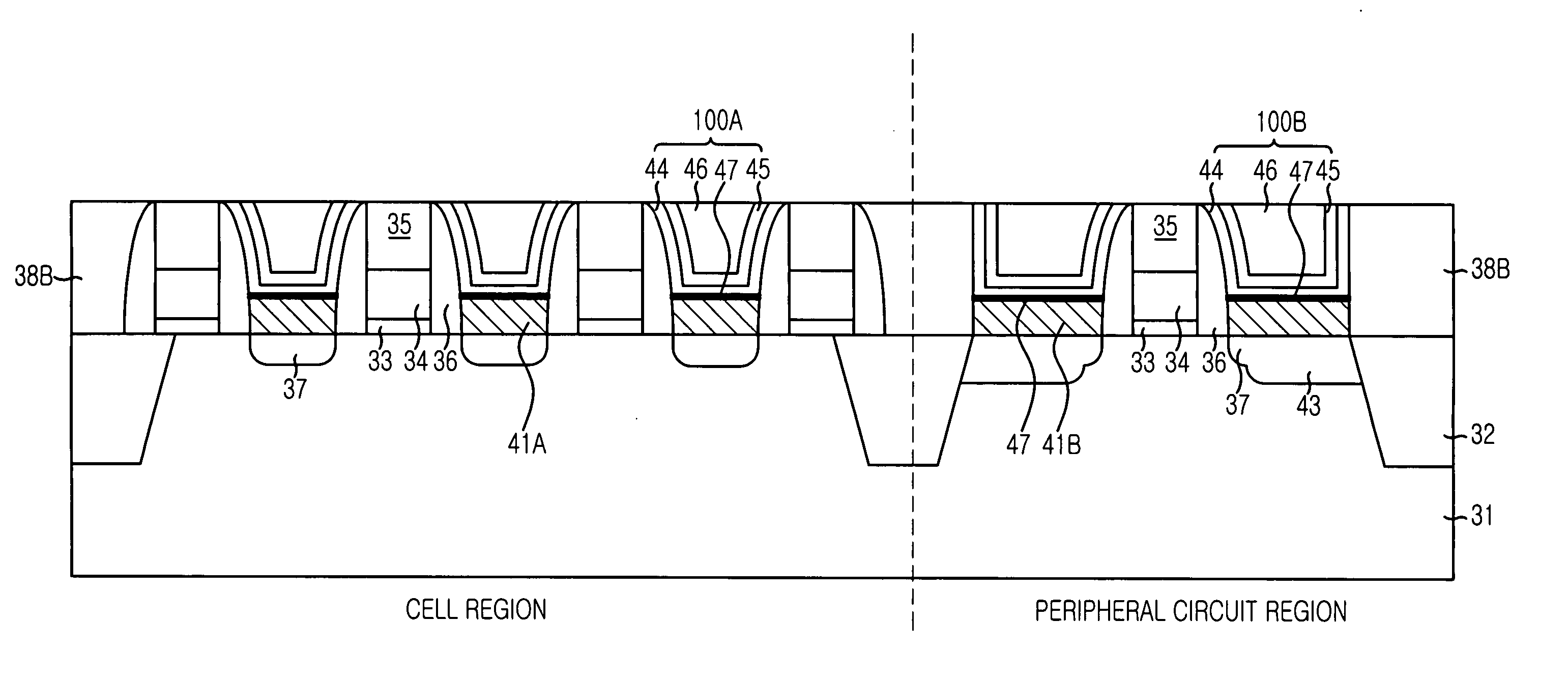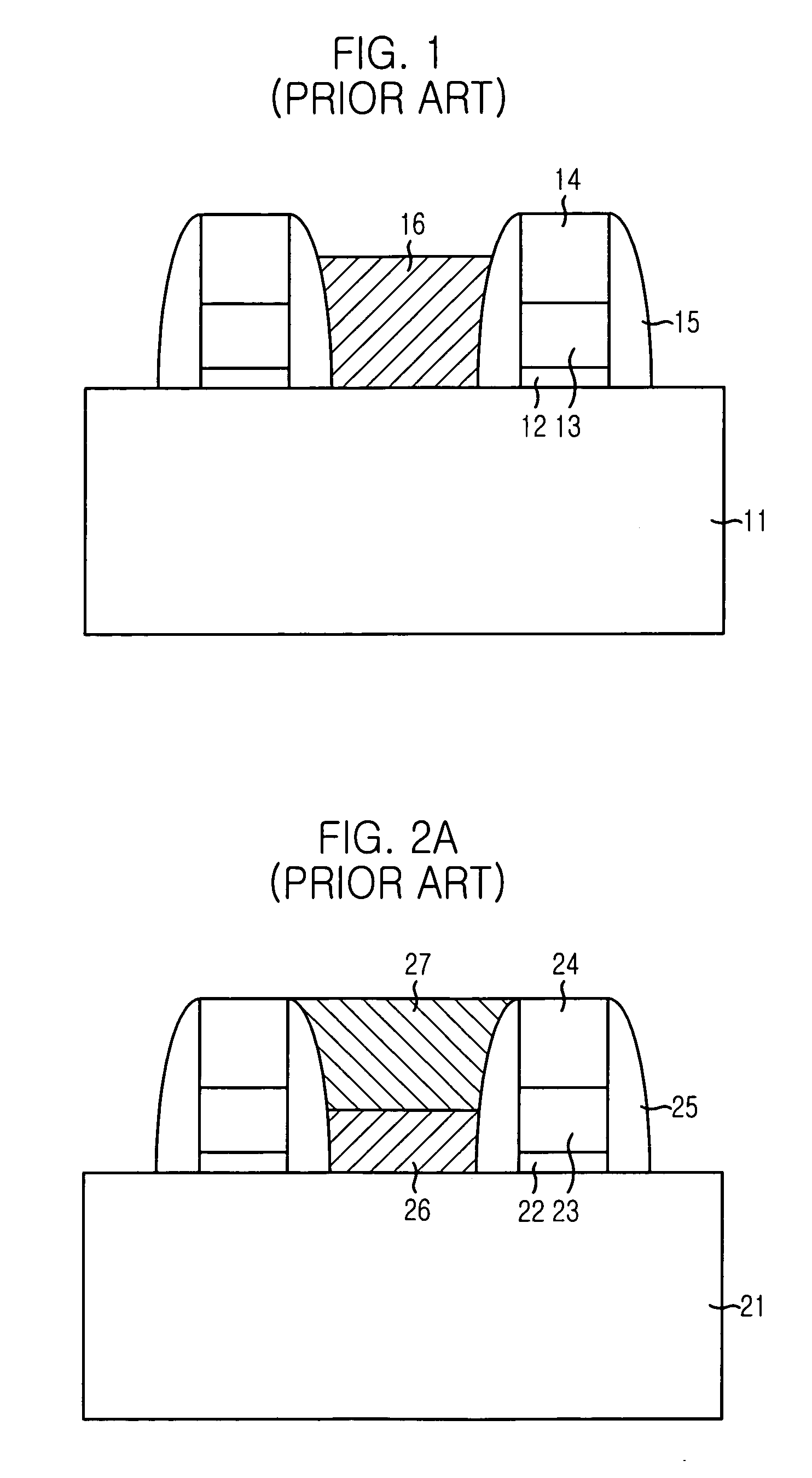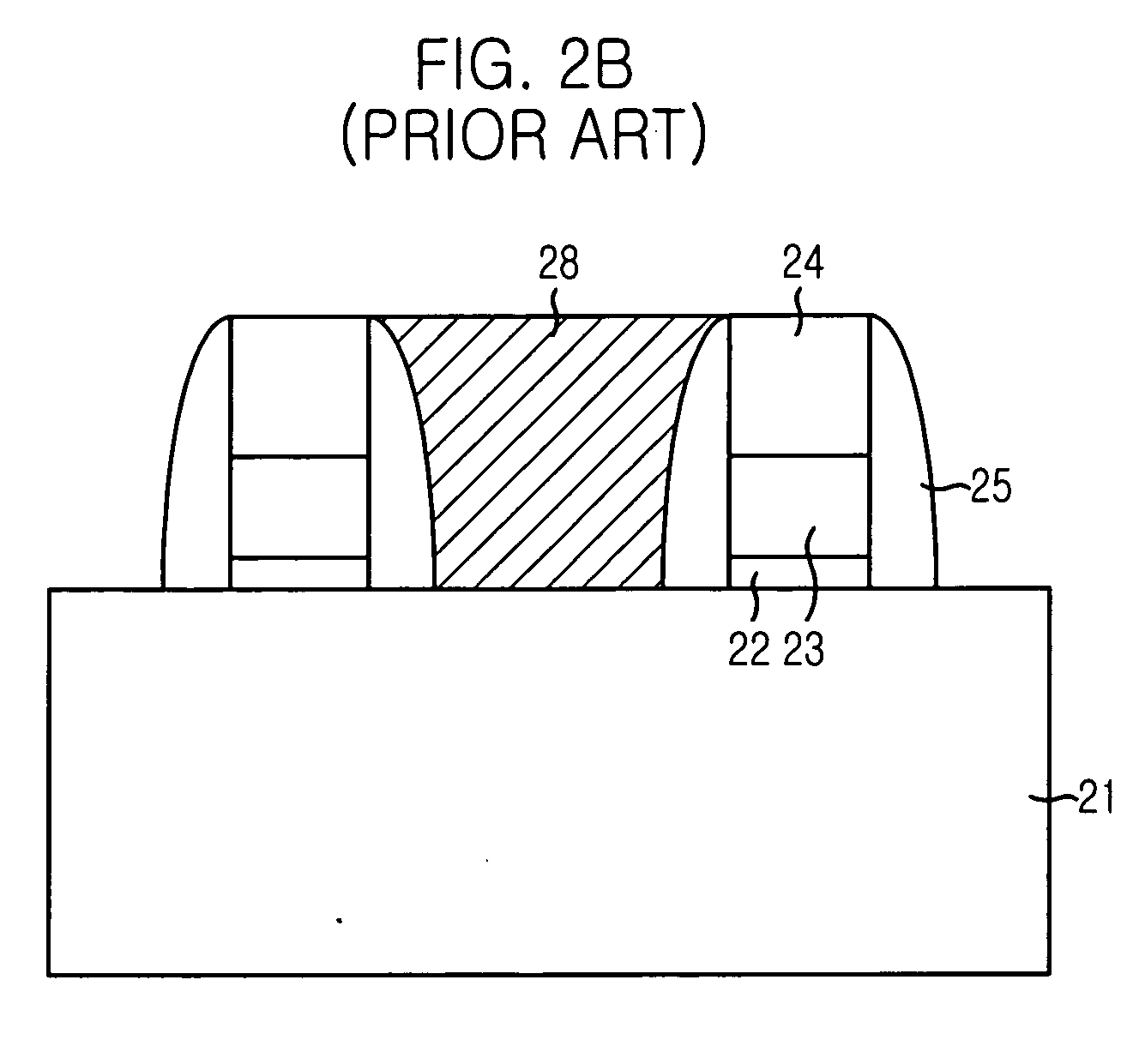Semiconductor device using solid phase epitaxy and method for fabricating the same
a semiconductor device and solid phase epitaxy technology, applied in the field of semiconductor device contact plugs, can solve the problems of device degradation phenomena, internal pressure degradation, data retention time degradation of semiconductor devices, etc., and achieve the effect of high resistivity
- Summary
- Abstract
- Description
- Claims
- Application Information
AI Technical Summary
Benefits of technology
Problems solved by technology
Method used
Image
Examples
Embodiment Construction
[0036] Hereinafter, detailed descriptions on embodiments of the present invention will be provided with reference to the accompanying drawings.
[0037]FIG. 3 is a cross-sectional view illustrating a semiconductor device structure in accordance with the present invention.
[0038] As shown in FIG. 3, the semiconductor device structure includes a substrate 31 defined with a cell region and a peripheral circuit region, a self-aligned contact (SAC) formed by sequentially stacking a first contact layer 41A that is an epitaxial layer, a second contact layer 100A that is a metal material on the cell region of the substrate 31, an elevated source / drain (ESD) formed by sequentially stacking a first ESD layer 41B that is an epitaxial layer, and a second ESD layer 100B that is a metal material on the peripheral circuit region of the substrate 31.
[0039] Referring to FIG. 3, in accordance with one embodiment of the present invention, the first contact layer 41A forming the SAC and the epitaxial la...
PUM
 Login to View More
Login to View More Abstract
Description
Claims
Application Information
 Login to View More
Login to View More - R&D
- Intellectual Property
- Life Sciences
- Materials
- Tech Scout
- Unparalleled Data Quality
- Higher Quality Content
- 60% Fewer Hallucinations
Browse by: Latest US Patents, China's latest patents, Technical Efficacy Thesaurus, Application Domain, Technology Topic, Popular Technical Reports.
© 2025 PatSnap. All rights reserved.Legal|Privacy policy|Modern Slavery Act Transparency Statement|Sitemap|About US| Contact US: help@patsnap.com



